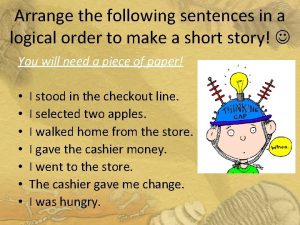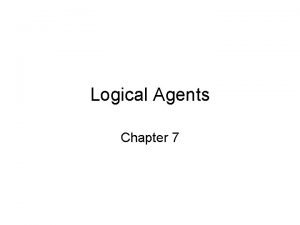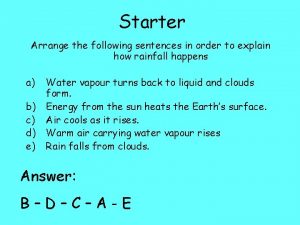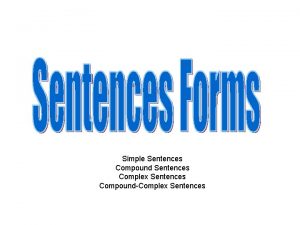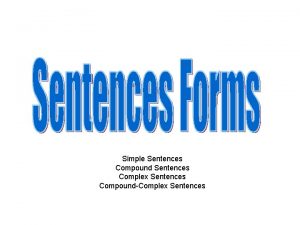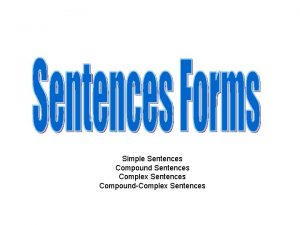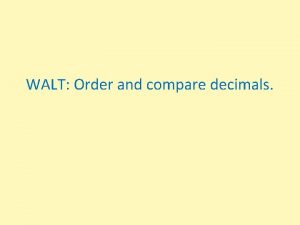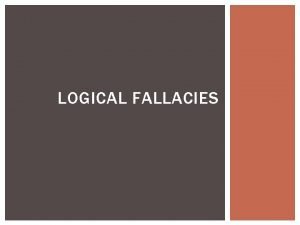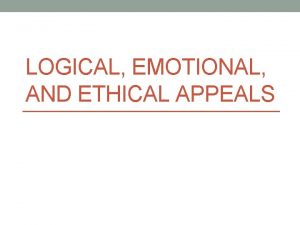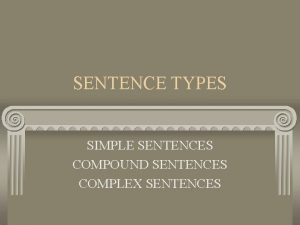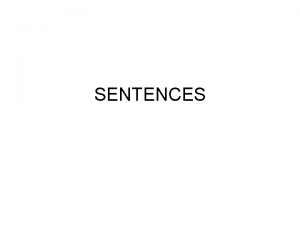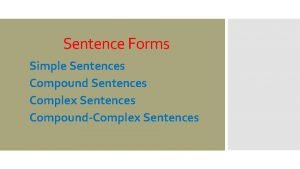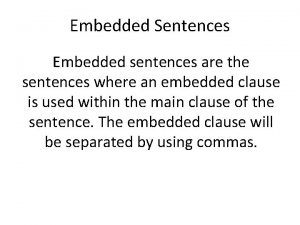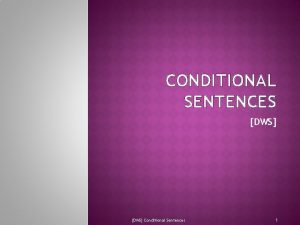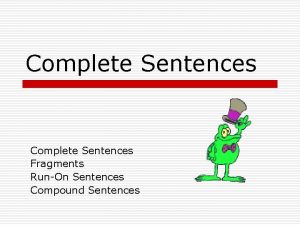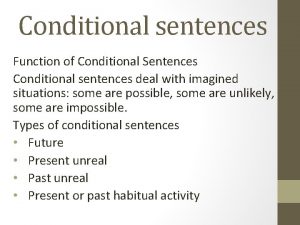Arrange the following sentences in a logical order




























- Slides: 28

Arrange the following sentences in a logical order to make a short story! You will need a piece of paper! • • I stood in the checkout line. I selected two apples. I walked home from the store. I gave the cashier money. I went to the store. The cashier gave me change. I was hungry.

Here is the correct order: • • I was hungry. I went to the store. It is like playing a game! I selected two apples. I stood in the checkout line. Put everything in the correct order! I gave the cashier money. The cashier gave me change. I walked home from the store. Paleontologists have to put layers of rock in order to figure out how old things are!

Relative Dating Which Came First? ? Chapter 6 Section 2

Relative Dating • What is it? – Figuring out whether an object or event is older or younger than other objects or events is called relative dating. – Comparing the age of a rock to the rocks around it. – In other words, you are estimating the age of a rock in relation to other rocks. – – Ex: If you are a middle child… you are younger than your sister. BUT… You are older than your brother. So: If your sister is 15 and your brother is 10, then your relative age can be 11, 12, 13, or 14.

The Principle of Superposition • Younger rocks on top and Older rocks on bottom! C Youngest B A Oldest

It is not just that easy…. • Not all rock sequences are arranges with the oldest layers on the bottom and the youngest layers on the top… • There are disturbances! • The forces with in Earth can push other rocks into sequences – Tilt or fold rock layers! – Break sequences into parts that move! – Some sequences are even upside down! • There is a valuable tool to help us with this confusion…

… The Geologic Column! • What is it? – An arrangement of rock layers in which the oldest rocks are at the bottom – Geologists rely on the geologic column to interpret the order of rocks So, is there a place on Earth that has a continuous sequence of all the rocks formed throughout history?

NO!

NO… ? ? ? • There is no single location on Earth that has a continuous sequence of all the rocks in order • Scientists have put different rock layers in order to form the Geologic Column to determine the relative age of rocks and other objects!


Let’s Talk about the Disturbances! Disturbances • Read P. 158 – 159

Missing Evidence • Missing rock layers create breaks in rock-layer sequences = unconformities! • Unconformity is a break in the geologic record created when rock layers are eroded or when sediment is not deposited for a long period of time – In other words, a rock layer that is partially missing due to erosion and is always younger than the rock layers beneath it! You just look for what is missing!

Different types of Unconformities • Use your book (P. 160) to describe and draw a picture of the following unconformities: 1. Disconformities 2. Nonconformities 3. Angular unconformities

Practice makes perfect! • Put the layers in order!

Did you get it correct? • Make sure you correct your paper!

Try this one!

Did you get it? 12 11 10 9 5 8 4 7 3 2 1 6

Finding Clues to Rock Layers Activity!!! You be the detective!

You be the Detective! • Fossil clues give geologists a good idea of what life on earth was like millions or even billions of years ago! • Problem: How can YOU use fossils and geologic features to interpret the relative ages of rock layers?

1. What “fossil clues” in layers A and B indicate the kind of environment that existed when these rock layers were formed? How did the environment change in layer D? • Fossils of marine animals in A and B • In layer D – Dinosaur tracks and a leaf = land

2. Which layer is the oldest? How do you know? • A is the oldest because the law of Superposition states that the lowest layer is the oldest.

3. Which of the layers formed most recently? How do you know? • Layer G formed most recently because the law of superposition states that the highest layer is the youngest.

4. Why are there no fossils in layers C and E? • Layers C and E are extrusions of igneous rock (igneous rocks do not contain fossils)

5. What kind of fossils occurred in layer F? • Dinosaur, Plant and bird fossils

Site 2 6. Which layer at Site 1 might have formed at the same time as layer W at Site 2? • Layer B

7. What clues show an unconformity or gap in the horizontal rock layers? What might have happened to these rock layers? • Rock layers that are missing from the sequence - Site 2 provide clues of an unconformity. • Layers E and D are missing between layers X and Y, which suggests an unconformity. • Layer A is also missing, which suggests an unconformity below W.

8. Which is older, intrusion V or layer Y? How do you know? • Layer Y is older • An intrusion is always younger that the layers it passes through

9. Working as a geologist, you find a rock containing fossils. What information would you need in order to determine the rock’s age relative to one of the rock layers at Site 1? • You would need to know of any layers at Site 1 contained the same index fossils.
 Fossils
Fossils Arranging sentences in order
Arranging sentences in order What is logical equivalence
What is logical equivalence Hukum kesetaraan logis
Hukum kesetaraan logis Arrange the sentences into a good paragraph
Arrange the sentences into a good paragraph Alphabet type test
Alphabet type test Specifies the way to arrange data in a particular order
Specifies the way to arrange data in a particular order Via optica
Via optica Arrange the food chain
Arrange the food chain Logic
Logic Chronological order
Chronological order Ldiction
Ldiction Logical order paragraph examples
Logical order paragraph examples Hình ảnh bộ gõ cơ thể búng tay
Hình ảnh bộ gõ cơ thể búng tay Ng-html
Ng-html Bổ thể
Bổ thể Tỉ lệ cơ thể trẻ em
Tỉ lệ cơ thể trẻ em Chó sói
Chó sói Tư thế worm breton là gì
Tư thế worm breton là gì Chúa yêu trần thế alleluia
Chúa yêu trần thế alleluia Môn thể thao bắt đầu bằng chữ f
Môn thể thao bắt đầu bằng chữ f Thế nào là hệ số cao nhất
Thế nào là hệ số cao nhất Các châu lục và đại dương trên thế giới
Các châu lục và đại dương trên thế giới Công của trọng lực
Công của trọng lực Trời xanh đây là của chúng ta thể thơ
Trời xanh đây là của chúng ta thể thơ Mật thư anh em như thể tay chân
Mật thư anh em như thể tay chân Làm thế nào để 102-1=99
Làm thế nào để 102-1=99 độ dài liên kết
độ dài liên kết Các châu lục và đại dương trên thế giới
Các châu lục và đại dương trên thế giới
